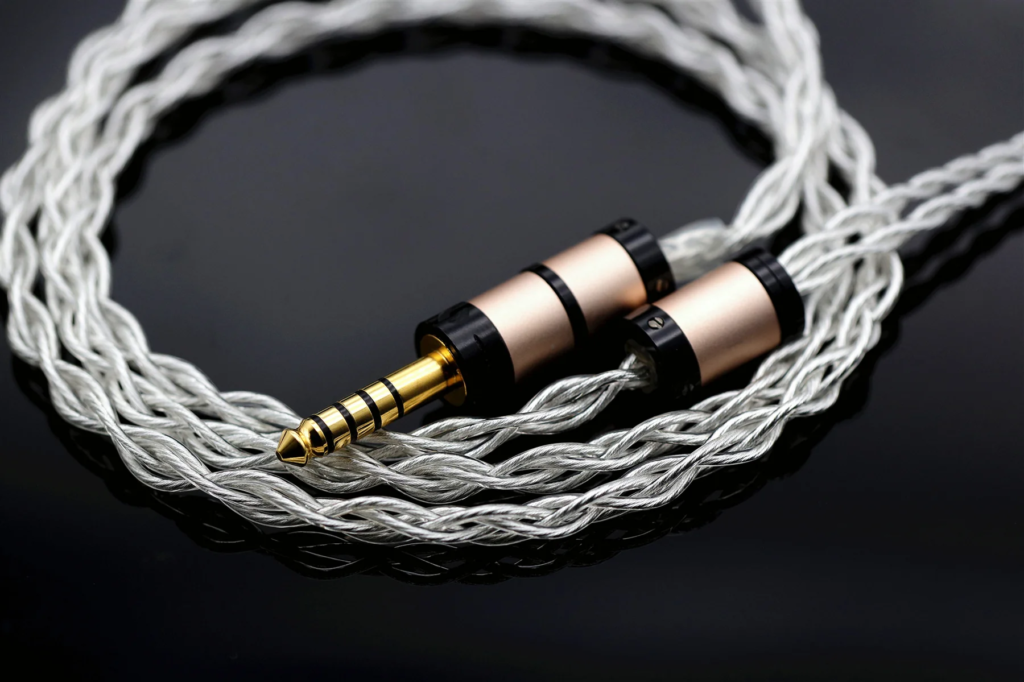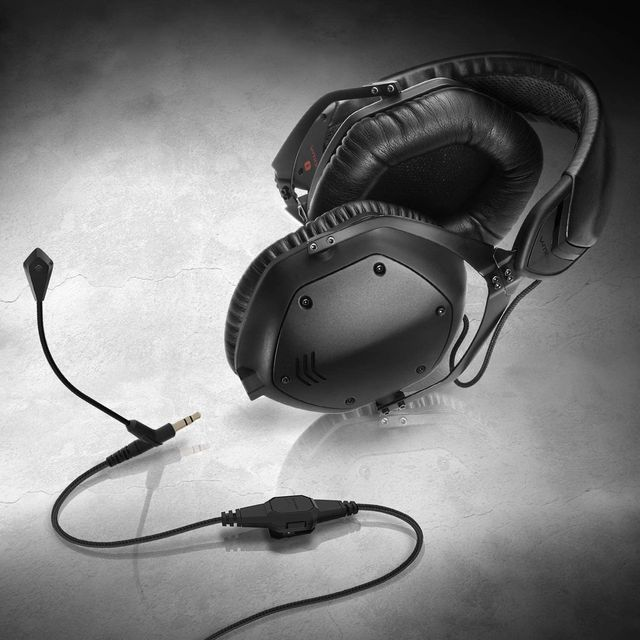If you’re struggling to decide whether to use in-ear monitors (IEMs) or a gaming headset for your audio requirements, you’re not alone. The market is saturated with countless options, making it difficult to determine the most suitable choice for your needs.
For this reason, we are comparing IEM vs Gaming Headset for better insights.
Regarding frequency response and sensitivity range, gaming headsets outperform IEMs. They provide better bass, communication, and audio details. However, IEMs offer superior sound staging and portability, while gaming headsets have better microphone quality and comfort.
Let’s know which one can be better than the other; keep reading!
IEM vs Gaming Headset [Comparison Table]
| Features | IEM | Gaming Headset |
| Frequency Response | 100 Hz to 10 kHz | 20 Hz to 20 KHz |
| Sensitivity Range | 80 to 125 dB SPL/mW | 90 dB/mW to 120 dB/mW or higher |
| Sound Staging | Decent Soundstage for its size | Large Soundstage |
| Portability | High Portability | Low Portability |
| Microphone Quality | Most Have No Built-In Microphones | Built-In Microphones Available |
| Comfort | Customization Options For Better Fit and Comfort | More Comfortable Due To Its Design |
The table above highlights the critical differences between IEMs and gaming headsets. And so you can make an informed decision regarding your gaming audio setup.
IEM vs Gaming Headset [Detailed Comparison]
We will look at each headset’s features, comfort, sound quality and how they compare. Unlike how HD650 compares with Fidelio X2, this comparison is vastly different.
But don’t worry, we will also provide our overall conclusion on which is better between Gaming headset and IEM. Let’s get into the details.
Frequency Response:

The gaming headset is better than the IEM regarding frequency response. This is because the gaming headset has a more extensive frequency response range of 20 Hz to 20 KHz compared to the IEM’s field of 100 Hz to 10 kHz.
The gaming headset’s more extensive frequency response range will generate a more precise and comprehensive sound, allowing for improved sound quality.
In addition, the gaming headset will deliver better bass, as the lower frequencies are reproduced more accurately. This, in turn, will grant the user a more engaging gaming experience, as the sound will be more realistic and robust.
The gaming headset will also enable better communication in games with voice chat features. Since the gaming headset has a more extensive frequency response range, the sound will be more accurate and transparent, allowing for better communication between players.
This will improve the gaming experience, making it more entertaining and competitive.
Sensitivity Range:
Regarding sensitivity range, gaming headsets are generally superior to IEMs. This is due to their more comprehensive sensitivity range, reaching 120 dB/mW or higher.
This allows gaming headsets to produce louder sound with less power than IEMs.
This broader sensitivity range is handy in gaming, enabling players to hear even the most subtle sounds. This is like footsteps or environmental cues, which can give them an edge in competitive gameplay.
On the other hand, IEMs tend to have a narrower sensitivity range, typically ranging from 80 to 125 dB SPL/mW. This means they require more power to produce the same sound volume as gaming headsets, which could disadvantage gamers seeking precise audio details.
Sound Staging:

In terms of sound staging, gaming headsets have larger sound stage compared to IEMs. Gaming headsets provide a more immersive and accurate soundstage.
Their design allows them to produce a more natural and precise spatial separation of sound. With this, it enables listeners to locate the source of each sound with greater precision.
In contrast, IEMs often have a narrower and less accurate soundstage due to their size. This design can create an artificial soundstage that makes it difficult for gamers to pinpoint the source of sounds accurately.
In addition to gaming, gaming headphones are often favored in audio applications that necessitate precise sound reproduction. This includes audio engineering, music production, and critical listening.
Portability:
In the portability area, IEMs are considered more favorable than gaming headsets due to their smaller size and compact design. IEMs are designed to fit inside the ear canal, making them much smaller and easier to carry around than gaming headsets.
IEMs are highly portable and can be effortlessly stored in a pocket or small carrying case. This is a convenient option for people who are always on the go. They are also more discreet and can be worn without attracting attention.
However, gaming headsets are usually larger and bulkier due to their over-ear design and added features, such as microphones and built-in controls. This can make them less portable and more challenging to carry, particularly if you need to pack them in a small bag or backpack.
Microphone Quality:

Regarding microphone quality, gaming headsets are mostly considered better than IEMs. This is because of their integrated microphones and specialized design for gaming communication.
Gaming headsets have built-in microphones that capture clear, high-quality voice communication during gaming sessions. These microphones are usually positioned near the user’s mouth to reduce background noise and improve voice clarity.
On the other hand, IEMs do not have an integrated microphone, and when they do, the quality is often lower than that of a gaming headset. Additionally, the microphone’s placement may not be optimal for voice communication, resulting in reduced sound quality and clarity.
Connecting IEMs with an external microphone for improved voice communication is possible. But, it may not be as convenient or effective as the built-in microphones in gaming headsets.
For this reason, gamers who prioritize high-quality voice communication should generally choose a gaming headset with a built-in microphone.
Comfort:
According to popular accounts, gaming headsets are reviewed to be more comfortable than IEMs because of their over-ear design.
Gaming headsets are designed to fit over the ear and distribute the weight evenly. This can reduce pressure on the ears and head during extended use.
They also often feature adjustable headbands and ear cups that can be customized for a better fit and increased comfort.
On the other hand, IEMs are inserted directly into the ear canal and may cause discomfort or irritation for some people. They can also fall out or become dislodged during physical activity, causing inconvenience to users.
While some IEMs may come with ear tips of different sizes for a more customized fit, they may still be less comfortable than gaming headsets for prolonged use. However, some individuals prefer the lightweight and discreet design of IEMs for running or working out.
IEMs vs Gaming Headphones: Usage Analyisis
IEMs and gaming headphones have different use cases and are suited for different activities. And so, the choice between IEMs and gaming headphones depends on the intended use. We will elaborate more on this.
For Gaming:
Gaming headphones are preferable as they are designed with gaming in mind and usually offer features that IEMs don’t. For instance, gaming headphones often have built-in microphones optimized for gaming communication, providing better sound quality and noise-cancellation technology.
They also have more significant drivers and better audio quality, which can enhance the overall gaming experience.
For Music:
IEMs are more suitable for on-the-go music listening because of their lightweight and portable design. They are often more affordable than gaming headphones, making them a practical option for budget-conscious music enthusiasts.
Gaming headsets are not usually good for listening to music because of inaccuracy in treble as well as bass. IEMs are far better in this regard. Although small in size, they have significantly better drivers and audio accuracy.
In this regard, a comparison between 32 ohm and 80 ohm headphones would make more sense.
However, their over-ear design can provide a more comfortable and immersive listening experience.
Choosing between IEMs and gaming headphones for music listening depends on individual preferences. If portability and affordability are essential, IEMs may be the better choice.
For Movies:
Gaming headphones can enhance the overall movie-watching experience as they provide better immersion.
Furthermore, The gaming headphones feature more significant drivers and better audio quality than IEMs.
Also, as stated earlier, their over-ear design can provide a more comfortable and immersive listening experience.
Moreover, some gaming headphones come with surround sound and EQ customization features. These specs can enhance the audio quality and tailor the sound to individual preferences.
Frequently Asked Questions (FAQs):
Can I use gaming headphones with my phone or tablet for watching movies?
Yes, you can use gaming headphones with your phone or tablet for watching movies. Most gaming headphones come with a 3.5mm jack or a USB adapter, which can be plugged into your device’s headphone jack or USB port. This allows you to enjoy high-quality audio while watching your favorite movies on your mobile device.
Which IEMs or gaming headphones are better for studying or working in noisy environments?
Noise-cancelling headphones are preferred over IEMs for studying or working in noisy environments. Over-ear noise-cancelling headphones are designed to reduce external noise and provide a more immersive listening experience, helping you to focus better on your work.
Do I need a separate microphone with IEMs?
IEMs do not have a built-in microphone, so a separate microphone is necessary if you want to communicate with others during activities like gaming. While some IEMs may have an inline microphone, its quality may not match that of a standalone microphone.
Bottomline
If you are comparing IEM vs gaming headset, the choice between IEMs and gaming headphones comes down to personal tastes and requirements. When deciding, it is essential to consider factors such as portability, audio quality, comfort, and specific features.
We hope you succeed with what we have outlined; it’s time to leave.
Bye for now!





![Sennheiser HD 650 vs Philips Fidelio x2 [Which One To Choose?] Sennheiser HD 650 vs Philips Fidelio x2 [Which One To Choose?]](https://reviewnery.com/wp-content/uploads/2023/03/sennheiser-hd-650-vs-philips-fidelio-x2-211x150.webp)
